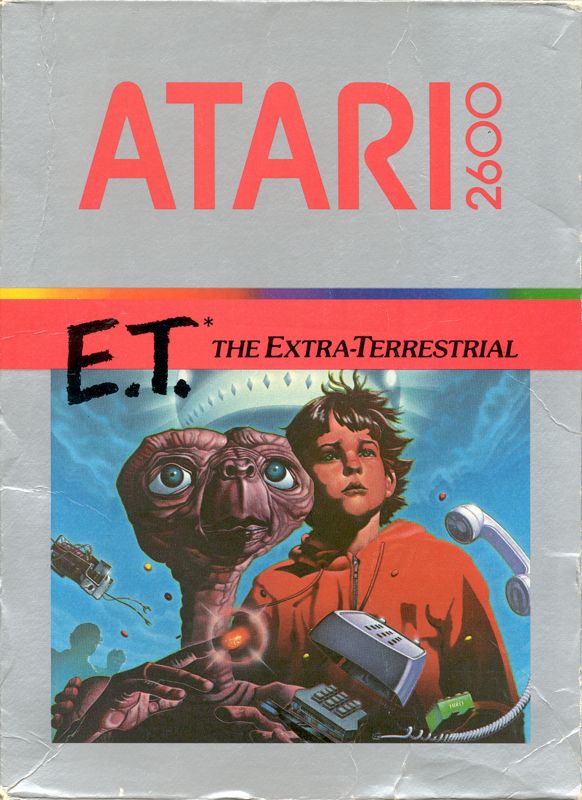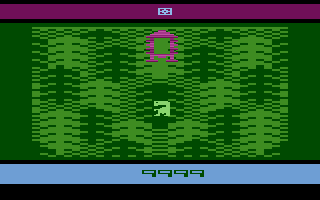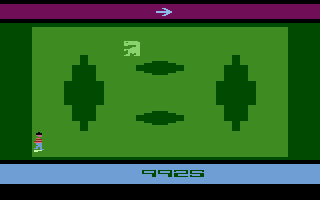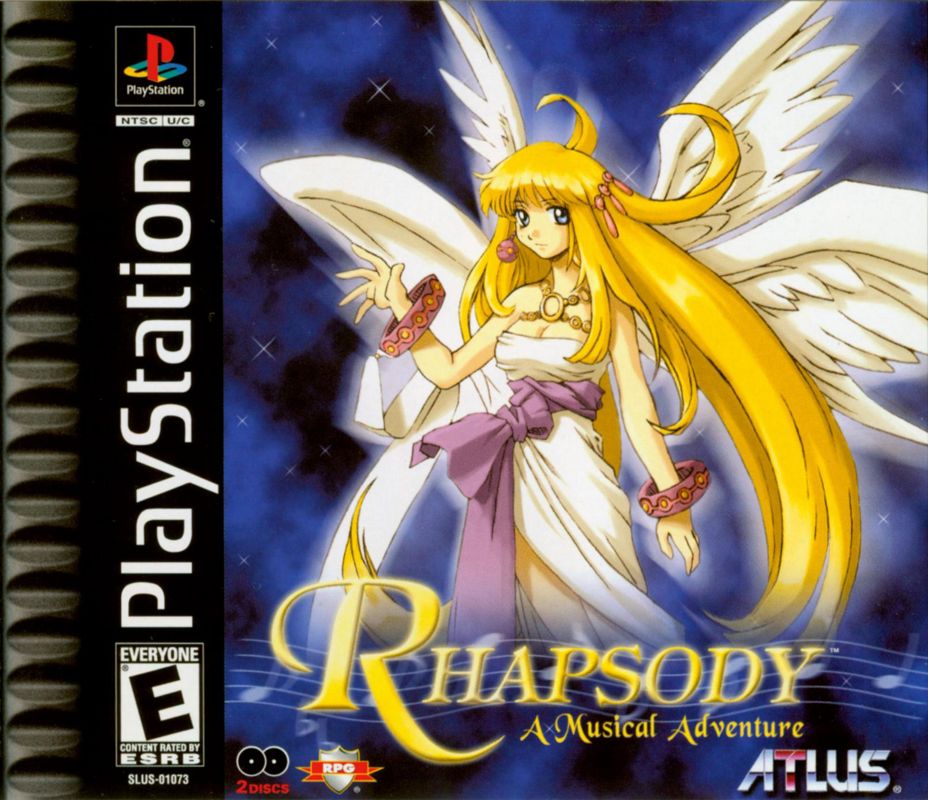Developer: Atari
Publisher: Atari
Release Date: December 1982
Okay I guess it’s time to talk about E.T. I’m sure you all know the story by now. Howard Scott Warshaw was given five weeks to develop an E.T. game for release during the Christmas season. It ended up being such a disaster that it ruined the whole video game industry, and unsold copies were buried in an Arizona landfill. Legends of the landfill were big talk in Atari circles for years until that part of the legend was confirmed to be true. However, it’s still somewhat untrue. Sure, there were E.T. carts buried in the desert, but that’s likely the fate of most unsold games. Warehouse space is limited, so there are probably copies of Final Fantasy VII and Ocarina of Time buried out there somewhere. However, the most relevant legend about this game is that it is the worst of all time. Now, I’ll say right up front that it is not the worst game of all time nor is it the worst game on Atari 2600. However, it is still a very, very bad game. If you think I am going to take a sympathetic, apologist view than you are greatly mistaken. I strive for honesty around here, so even though Howard Scott Warshaw hangs around on the AtariAge Facebook page and wrote a book that its members won’t stop spamming, I still have to concede that his game is, in fact, quite bad. Just as in the Atari of old I come to bury E.T. not praise it.
E T. is a game all about holes. When you first turn it on and haven’t read the manual than you will probably move over a screen and instantly fall in a hole. Then you will try to get out and fall again. Then you will eventually get out only to walk a couple steps and fall in another hole. E.T. will fall if any part of his body comes in any contact with a hole. I think everyone who plays this game thinks that there must be some mechanic they are missing. Surely the object is to avoid the holes and get over to where the actual game starts. Sorry Atari players, but you are actually supposed to be falling in the holes. That’s how you win the game. E.T. must find the three parts to his phone so he can call his spaceship and get the heck out of this hole-filled planet. All of the pieces are, of course, hidden in holes. There is a question mark that shows up from time to time that will show you the location of a phone piece if you push the button, so at least there’s that. Although because Warshaw couldn’t quite get anything right in this game sometimes the question marks are on screens where there are no phone pieces. The instructions also state that there can be more than one phone piece per screen, so you still have to check them all. Some say that the game is only considered bad because people don’t understand how to play. However, falling into a bunch of identical holes and slowly floating out of them just isn’t fun. It’s not like there are any monsters to fight or even different colors to look at. It’s just the same thing over and over.
Strangely during the second half it becomes a game of avoiding holes. While E.T. is wandering around his health is quickly deteriorating. When he runs out, and after Eliot has used up all his resurrections, it’s game over. Nothing depletes his health more than levitating, so watch out. The next task is finding the spot to use the phone. As E.T. moves around various icons will pop up at the top of the screen which all have different functions. It can be confusing if you don’t know what to look for because some of them seem to contradict each other. I thought the arrows pointed the way to a phone piece, and so I got quite confused when I would take a couple of steps and the arrow would suddenly change directions. It turns out they are actually warps. Different icons appear depending on what part of the map E.T. is standing on. The goal in this part of the game is to find the one tiny spot on the map that has an icon that kind of looks like a phone if you squint. So now the strategy is to traverse every spot on the map looking for the phone icon while trying to avoid energy depleting holes. This is still not very much fun. E.T. can’t do anything besides slowly walk, and there are no bonuses to be found except for tiny dots of candy. The first time I tried this I found the phone easily, but the second time I looked just about everywhere, and it never turned up. Nothing’s more irritating than looking for one tiny spot on the map that doesn’t even have any clues to its whereabouts. So you call your spaceship, and what do you suppose you have to do to actually ride it? Yep, you find another tiny spot on the map. At least this one is always on the same screen.
That is basically the game. On harder difficulties a scientist and F.B.I. agent will chase you around which at least adds a little action to the game but also makes it more frustrating. So now I’ve done everything I could possibly do to give E.T. a fair chance. I read multiple strategy guides and played it several times so that I could understand it well. I’ve spoken to Warshaw a bit and he seems like a nice enough guy and not someone I would want to insult just for the sake of insulting. However, what it all boils down to is a game that’s simply not fun. I know Warshaw only had five weeks to make the game, but dude, you didn’t have to make a complicated adventure game. You made Yars’ revenge, so I know you had the skills to make a great action game. Even a halfway decent shooter would’ve pleased the kids at Christmas time. He did have some adventure game success with Raiders of the Lost Ark, which I will review when I find another Atari controller, but that game was aimed at a more mature audience and garnered extremely mixed reviews. It’s ironic that the whole point of E.T. was to make a game for kids and he made a game so complicated that even adults have trouble figuring it out.
E.T. probably doesn’t deserve its reputation as an industry killer. It was just one piece in a complicated puzzle of what turned out to be merely a temporary setback in the video game market. Atari would go on for many more years and had some arcade success even if they never had another truly successful console again. If I was going to look at one single game that was even more responsible for the crash, I would pick Apollo’s Skeet Shoot. However, what gives E.T. such a bad reputation is its prominence. It was an adaptation of a cultural phenomenon made by the biggest game company of its era. There are worse 2600 games, but most of them were made by small companies that didn’t have much traction in the industry. Sure Fire Fly is a bad game, but it was made by Mythicon, a company that had never been heard of before and disappeared just as quickly. I’m sure it’s more well-known now than it was in the 80s. E.T. is one of those games that caused kids to lose their innocence somewhat. It made them realize that video games were products that weren’t all being made for with love and fun in mind. The main goal for Atari was to get something out by Christmas. Nobody cared if it was good or bad. It just had to exist. Atari would pay a great price for this hubris, probably too big of a price, but at least it made gamers smarter. Movie games would always have a bad reputation, but by the NES era everyone expected them to. People started to pay attention to reviews more and could separate the good games from the bad. Rentals would rise to prominence in the late 80s so people could play before buying. E.T. might not be the worst game, but it will always be the most important bad game of all time. For better or worse it’s a game that changed everything.
AS far as rankings to it’s certainly not going all the way to the bottom. It’s better than anything on Hyperspin and I would rather play it than a single game gambling simulator. Actually, it’s not even the worst Atari game on the list. That honor goes to Birthday Mania, a game that carried no cultural relevance on account of it selling approximately two copies. It’s crawled all the way up to #102, which like Mario Mendoza’s lifetime .215 batting average is still very bad but better than expected. Hey at least it’s not Ben 10.
Atari 2600
- Yars’ Revenge
- Adventure
- Video Pinball
- Fast Eddie
- Gopher
- Entombed
- Red Sea Crossing
- Gamma-Attack
- Cosmic Commuter
- Gyruss
- Space Jockey
- E.T.
- Birthday Mania








